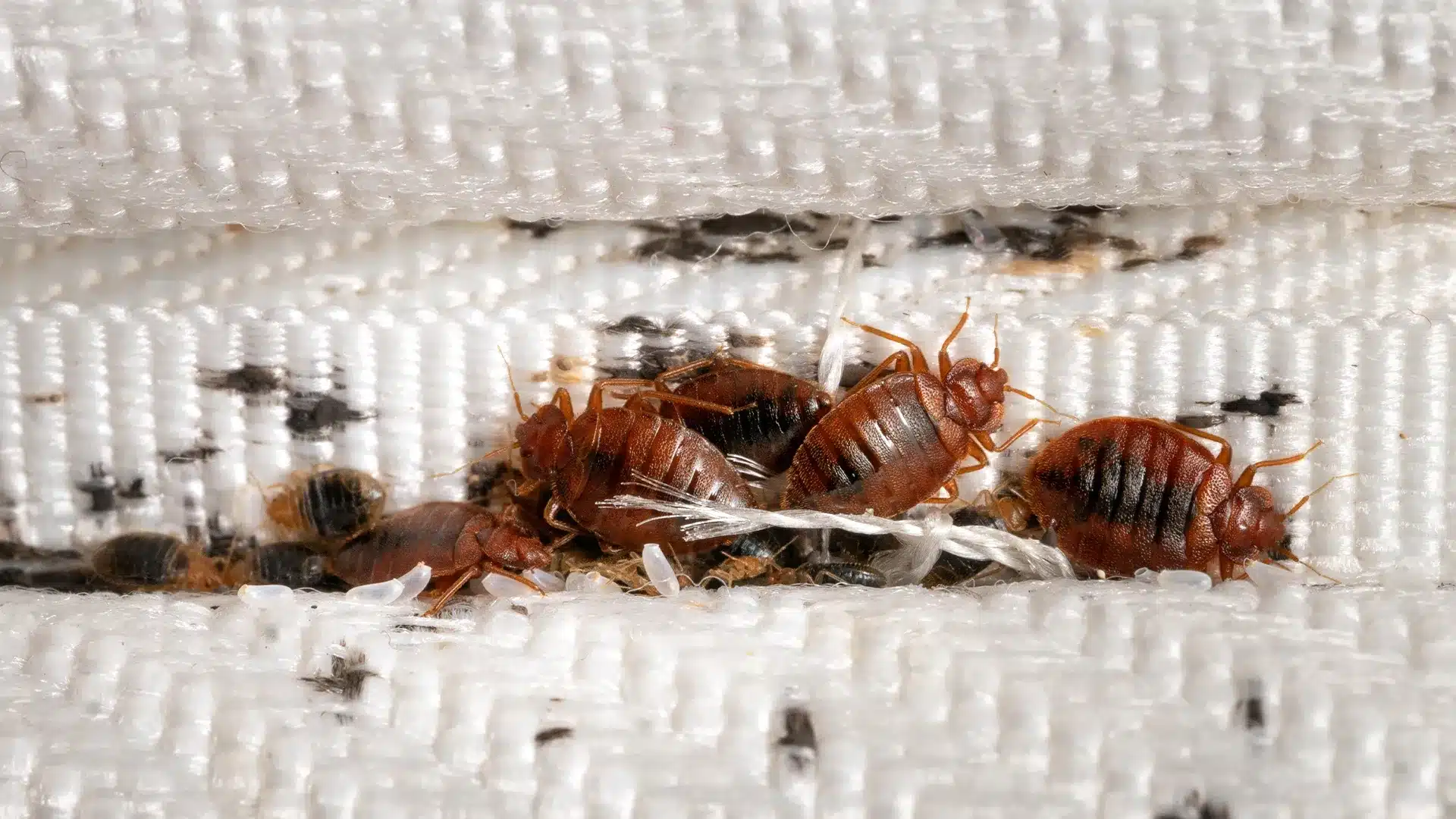Trusted DC Exterminator for Bed Bug Heat Treatment Near Me
Trusted DC Exterminator for Bed Bug Heat Treatment Near Me
Blog Article
Checking Out the Science Behind Bed Pest Warm Treatments as a Lasting Insect Monitoring Technique
In the world of insect monitoring, the mission for lasting and effective services continues to be a constant quest. One such method that has obtained traction recently is the usage of heat therapies to combat bed insect problems. By harnessing the science behind thermal fatality factors for these persistent bugs, warmth treatments use an encouraging alternative to standard chemical-based strategies. The complexities of exactly how warmth effectively eliminates bed insects and the more comprehensive implications for sustainable insect monitoring techniques make this a subject worth exploring even more.
Bed Pest Warmth Therapy Refine

Thermal Death Factor for Bed Insects
Revealing bed bugs to elevated temperature levels beyond their thermal tolerance variety is important for achieving effective eradication in heat therapy procedures. The thermal death point for bed bugs describes the temperature at which these pests can not make it through. Study suggests that bed insects begin to die when exposed to temperature levels over 113 ° F(45 ° C) for a continual period. As the temperature raises, so does the mortality rate of bed insects. At around 118 ° F(48 ° C ), bed pests start to die swiftly, with a death price of almost 99% within mins of exposure. This demonstrates the sensitivity of bed insects to heats and highlights the performance of heat treatments in removing problems. By reaching and preserving temperature levels above the thermal fatality factor for bed insects, pest monitoring specialists can make certain thorough removal of bed bug populations, including hard-to-reach areas where chemical therapies may be much less effective. Comprehending the thermal fatality factor for bed insects is essential for executing successful warmth therapy techniques and achieving sustainable pest monitoring outcomes.
Benefits of Heat Treatments
Having actually established the essential thermal death point for bed pests, it is crucial to now explore the substantial advantages that warm therapies supply in properly eradicating these resistant parasites. When contrasted to typical chemical methods, warm therapies present a number of crucial benefits. One of the primary advantages is that heat can pass through deep right into gaps and splits where bed insects conceal, making sure that even one of the most hard-to-reach areas are heated to lethal temperature levels. This extensive technique not only kills online insects but additionally targets bed insect eggs, stopping future infestations.
In addition, warmth treatments are safe and eco-friendly, making them a sustainable insect management technique. Unlike chemical pesticides, heat therapies do not leave harmful deposits that can posture dangers to human wellness or the setting. This aspect is especially crucial in delicate atmospheres such as healthcare facilities, colleges, and houses where chemical use might not be preferable.
In addition, heat treatments have a high success rate in eliminating bed insect infestations in a single therapy, lowering the demand for numerous check outs and decreasing disturbance to occupants. This performance not just saves time and money yet also gives tranquility of mind to those managing bed insect issues.
Performance of Heat Treatment

Warm therapies have actually the added advantage of eliminating bed bug eggs, which are typically immune to standard chemical therapies. Generally, the effectiveness of heat therapies in look at here now removing bed pest infestations makes them a trustworthy and sustainable insect monitoring method.
Sustainable Parasite Management Advantages
Carrying out sustainable parasite administration methods offers long-term advantages for both the environment and public wellness. By utilizing approaches such as heat therapies for insect control, we can decrease the dependence on damaging chemical pesticides that can have damaging results on communities and human health and wellness - exterminator near me. Sustainable parasite management approaches help in preserving biodiversity by targeting specific insects without damaging non-target microorganisms, thus preserving a well balanced ecosystem
In addition, sustainable pest management techniques add to the general health and wellness and health of the exterminator general public. By reducing direct exposure to poisonous chemicals made use of in conventional parasite control methods, warmth therapies give a much safer option for bug administration in household, commercial, and public rooms. This decrease in chemical use also aids in protecting against pesticide deposits from infecting water, air, and soil, safeguarding ecological high quality.
Final Thought
In verdict, bed pest warm therapies have been revealed to be a reliable and sustainable parasite administration approach. The thermal fatality factor for bed insects makes them at risk to warm treatments, which have countless benefits over standard chemical treatments. The effectiveness of warmth therapies in eliminating bed bug infestations while reducing ecological effect highlights the possibility of this method as a lasting remedy for pest control.
The bed insect heat therapy procedure involves increasing the temperature level within infested areas to a degree that effectively gets rid of bed pests and their eggs. By reaching and keeping temperatures above the thermal death factor for bed pests, bug monitoring experts can guarantee comprehensive removal of bed bug populaces, consisting of hard-to-reach locations where chemical therapies might be less effective. One of the primary advantages is that heat can pass through deep right into holes and splits where bed pests conceal, making sure that also the most hard-to-reach areas are heated to dangerous temperature levels. Unlike chemical therapies that may leave behind resistant populaces, heat therapies provide a eco friendly and safe option that can click here for more pass through deep right into furniture, walls, and various other hard-to-reach areas where bed bugs conceal.
The thermal fatality point for bed pests makes them prone to warm therapies, which have many advantages over traditional chemical therapies.
Report this page